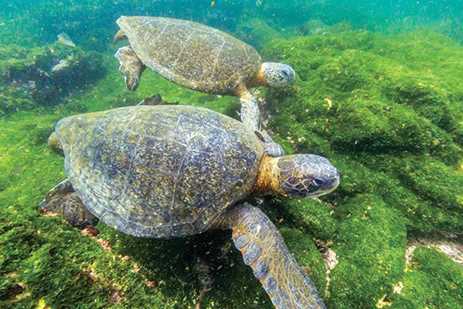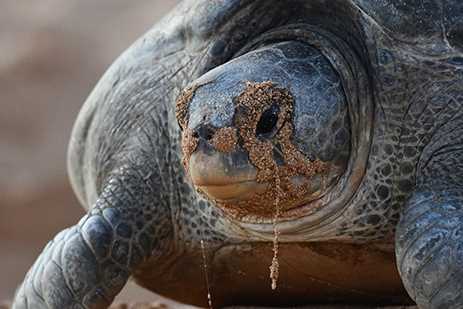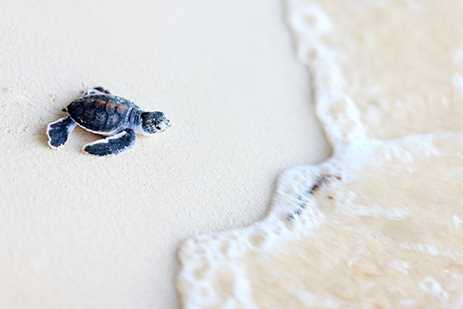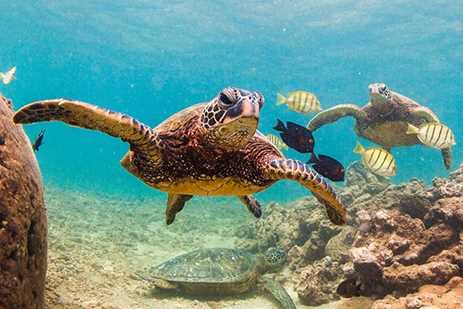Call +1.800.397.3348 or contact your travel advisor
The sea turtle is one of Earth’s oldest creatures—its distant cousin first popping up in fossils dating back more than 200 million years, when dinosaurs roamed. But despite their long track record, these ancient reptiles face a life fraught with challenges, from the very moment they’re born. It’s estimated that only one of every 1,000 hatchlings will survive to adulthood. Get Inspired By Photos, Videos, Webinars, Stories, And Exclusive Offers. Sign Up
Just two inches long when they break out of their sandy nests, typically at night, baby sea turtles make a mad and dangerous dash to the sea, guided only by the slope of the beach and bright reflections of the moon and stars on the water. Survivors that make it past the numerous obstacles—predators like crabs and birds, disorienting artificial lights, even deep footprints in the sand—swim in a frenzy for up to hundreds of miles. They instinctively know how far to go to reach ocean currents that will carry them to far-flung feeding grounds where they’ll hide out for years, eating and growing.
When mature and ready to mate, at anywhere from 26 to 40 years old, sea turtles leave the feeding grounds where they spend their lives and migrate huge distances—sometimes thousands of miles across entire oceans. Using Earth’s magnetic field like a GPS, they navigate back every three to four years to the exact same beach where they were born. They mate in shallow water, and the females climb ashore to lay their eggs, up to 200 in a single sandy nest. And slow and steady, the adventure begins again.
Discover more facts about the Green Sea Turtle, one of seven sea turtle species.
Lean & Green
Green sea turtles get their name not from the color of their shells but for the green fat underneath—a hue that likely comes from their all-plant diet of algae and seagrass. Although young turtles dine on insects, crustaceans, and worms, as adults they become the only sea turtle species that is strictly herbivorous.

Turtle Tears
When coming ashore to nest, sea turtles often appear to be crying. But don’t let those big tears fool you—they’re actually for good reason. Special “salt glands” behind their eyes help rid their bodies of the excess salt they take in sipping ocean water during their long stays at sea.

Just Right
The temperature of the sand where a sea turtle nests determines the sex of the hatchlings. Warmer sand produces more females; cooler sand, more males. A steady temp of about 85ºF results in a mostly 50/50 split. Unfortunately, climate change could start skewing these ratios, which would create a significant threat to genetic diversity.

Swim Champs
Green sea turtles spend their entire lives at sea (aside from nesting females coming ashore)—and are well adapted for the job. A streamlined shell and appendages that can’t retract inside make them more hydrodynamic in the water. Plus, powerful breath control lets them dive up to 960 feet for food and stay submerged up to seven hours when sleeping and conserving energy.





